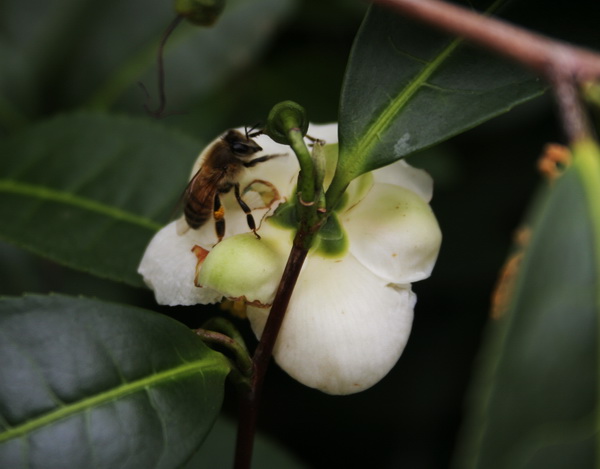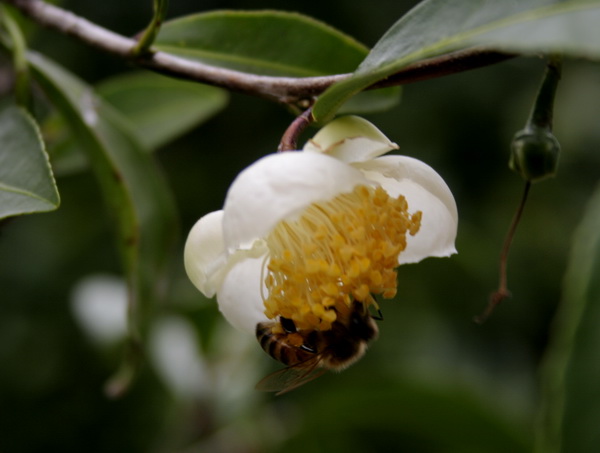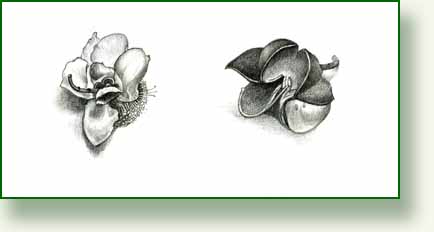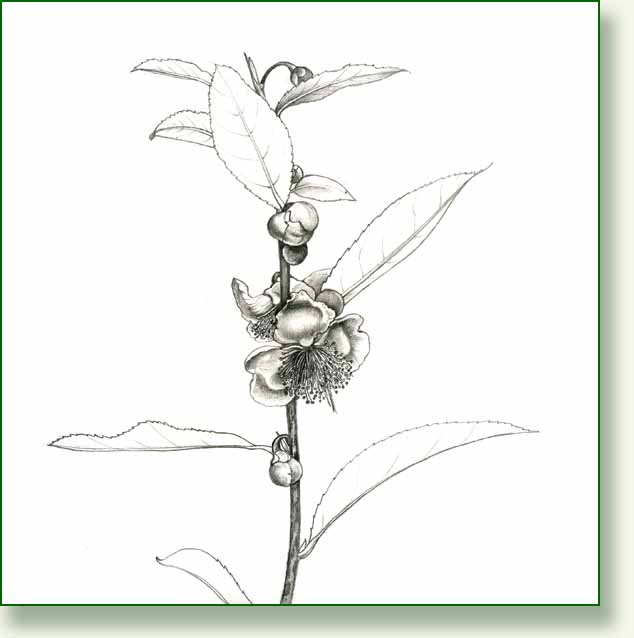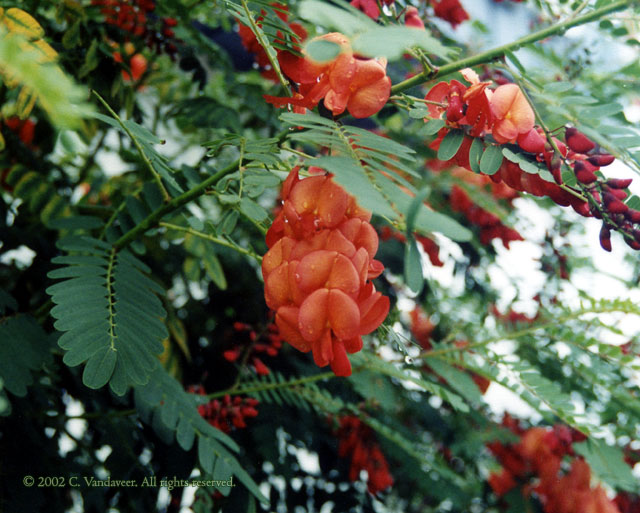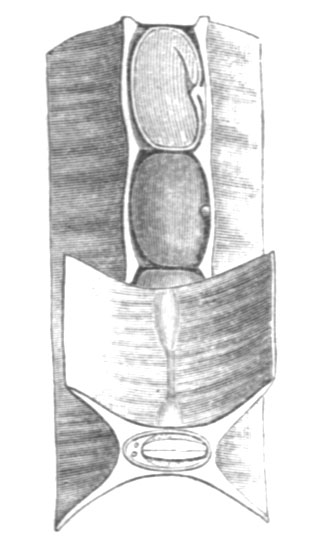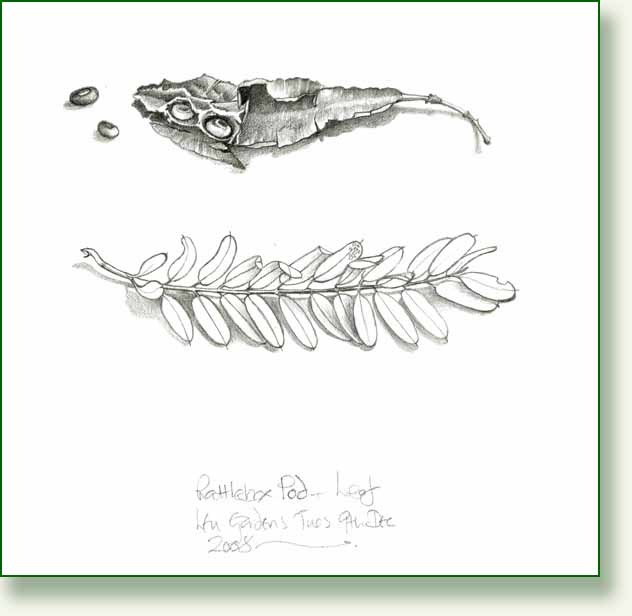I spent a few hours today at the Gardens taking slightly different routes. With all the clearing of undergrowth and general tidying up, some of the usually overgrown parts are accessible and today I found some new trees and went “off path” by the lake shore and in amongst the trees in the South Woods. If you don’t venture off path you will miss things like the Midnight Horror tree, the Wax Jambu, and one of yesterday’s finds the Looking Glass Tree. When/if I have more time I will draw my own map of the gardens, but here is a shot from the wonderful Google Earth (don’t you just love to fly around the world with them!).
It makes the Gardens look so neat and compact that it is hard to believe that almost every week I find the odd lost person, looking for the exit. But there are 50 acres and over 3 miles of paths.
So today I wandered from top right to top left all along the shore and then down to bottom left in amongst the many winding paths of the South Woods, which are just visible amongst the trees. You can understand why I am there so long, especially as I am stopping to look at everything as I go. The formal Rose Garden shows so clearly here in the centre here but is somewhere I seldom visit.
So, short of time today, just a couple more drawings of the lovely tea plant and two photos from today with the bees with the tea flowers. They were so busy they didn’t even notice me.
I am very very fond of bees.
Given the very worrying recent decline in their numbers I feel we should all have a hive in the back garden. My parents kept bees. Not only are they wonderful and endearing creatures, they are vital to our planet’s well being and ours too. Without their tireless pollination a third of our food crops would die, to say nothing of the wild flowers and trees that the animals rely on. To be without them is unthinkable. Here is an extract from the recent book “A World Without Bees” by Alison Benjamin & Brian McCallum, who were looking into the causes of the decline in the bee population. Partly to blame in America may be the factory farming attitude to commercial bee keeping where bees are shipped by the lorry load to pollinate crops all over the country.
“They are driven thousands of miles on the backs of huge trucks from the far corners of the United States, their hives stacked five-high. Half of all the 2.5 million honeybee colonies in the US make this annual cross-country trek from as far afield as Massachusetts in the east and Florida in the south.“
They are even flown in from Australia to boost the numbers for the pollination task. It’s hard not to see an analogy with other migrant workers and their plight.
The writers compare this with their own back garden hive;
This intensive, migratory beekeeping is a far cry from the hobby we pursue in our small back garden in south London. The only move for our bees was from the apiary where we collected them to the spot by the wall where their hive has sat for a couple of years. From this sheltered location, they happily forage from spring right through to the end of autumn for nectar and pollen among the parks, gardens, railway sidings and tree-lined roads that dot the Battersea landscape. In the process they make enough honey to keep us and them well fed throughout the year.
There is something magical about watching your bees return home after a hard day’s foraging on a balmy summer evening. For many urban apiarists who work all day in an office, they are an antidote to the stresses of city life. Creating a rural idyll in a corner of a housing estate was our small way of trying to reconnect with nature. It fulfilled something we knew was missing from our lives, a feeling we couldn’t quite put our finger on, but is now being termed “nature-deficit disorder”.
You can read more of the extract from the book here and I will be back with more bee related things next week.
This morning I happened to glance at the orchid and suddenly there behind my back with no warning or fanfare was a open flower. It was still tightly wrapped yesterday. I just knew this would happen. I am going to be away for 2 days and by the time I get back the wretched thing will no doubt have opened up completely, my opportunity for some flower-opening sketches missed. Untrustworthy indeed and I know I am not the only one who thinks orchids are a bit suspect.
I am away for two days.. we are having a weekend break to see the sea.. yippee…
______________________________________________________


